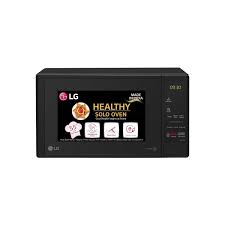


Buying a microwave oven is no longer just about reheating leftovers.
A microwave oven has become more than just a heating tool in modern kitchens. From defrosting frozen food and reheating leftovers to baking and cooking full meals, its utility now extends across diverse cooking styles. But with so many types, sizes, and features on the market, selecting the right microwave oven requires careful consideration.
If you’re planning to add this appliance to your kitchen, here are the essential factors to guide your decision:
Understanding the different types of microwave ovens is the first step. Generally, there are three types: solo, grill, and convection. A solo microwave oven is ideal for basic cooking needs like reheating and defrosting. It’s best suited for individuals, students, or small households.
Grill microwaves come with additional accessories for grilling vegetables or meat, while convection models offer even more functionality with built-in fans that circulate heat—making them suitable for baking and multi-stage cooking.
Your choice should align with your daily cooking habits and how much time you want to spend preparing meals.
Microwave ovens come in various capacities measured in litres. If you are living alone or with a partner, a compact model might do the job. But if you cook often for a family or entertain guests, a larger capacity will ensure you can heat or cook food in larger portions.
Make sure to consider the counter space available in your kitchen as well. Overestimating the size could lead to inconvenience, especially in smaller kitchens.
Higher wattage means faster cooking, but it also impacts your electricity consumption. Depending on how frequently you plan to use the microwave and the type of food you intend to prepare, choosing the right power rating can make a difference in both cooking performance and energy bills.
Microwaves used mainly for heating or simple meals won’t require high wattage, but if you’re planning to bake or grill, you’ll need a model with more power.
Modern microwave ovens come with a range of features such as auto-cook menus, child safety locks, multi-stage cooking, and even sensor-based heating. These additions can improve ease of use and help maintain food quality, but they can also complicate operations if you’re not tech-savvy.
Decide which features genuinely benefit your kitchen habits and skip those that sound fancy but won’t see regular use. Simple touch panels or dial controls work well for everyday tasks.
An overlooked factor, maintenance plays a big role in the longevity of your microwave. Models with stainless steel interiors or antibacterial coatings are easier to clean and maintain. Look for designs that reduce food splatter or have accessible corners for easy wipe-downs.
Avoid heavily textured interiors as they tend to trap grease and food particles. A clean appliance isn’t just about hygiene—it also ensures consistent performance over time.
Buying a microwave oven is no longer just about reheating leftovers. It’s about selecting a device that complements your cooking needs, space, and lifestyle. Whether you’re considering a multi-function convection model or a basic solo microwave oven, understanding the key factors before purchasing helps you make a more informed, long-term choice. Select wisely, and your microwave can become one of the most reliable tools in your kitchen.
